From bustling city streets to championship courts and marathon trails, the U.S. sports shoe scene tells a story of passion, innovation, and culture. Each brand has carved its unique path—some blending cutting-edge performance with celebrity flair, others mastering comfort and everyday wear. Whether it’s the adrenaline-pumping cushioning for runners, court-ready stability for basketball stars, precision traction for golfers, or plush memory foam for casual walks, these shoes aren’t just footwear—they’re companions for every stride, jump, and sprint. Iconic collaborations, athlete endorsements, and eco-conscious innovations add layers of style, credibility, and sustainability, making each pair a reflection of personality and purpose. From the aspirational energy of Nike to the performance-driven technologies of Under Armour, the reliable craftsmanship of New Balance, or the comfort-first designs of Skechers and Hoka, America’s top sports shoe brands bring stories, performance, and lifestyle to your feet. Step inside, explore, and discover which pair matches your journey.
Key Specification of Sports Shoes
The footwear lineup offers a range of shoes designed for diverse athletic and lifestyle needs, combining advanced cushioning, responsiveness, and support technologies. Basketball and court shoes feature explosive cushioning, lockdown stability, and grippy outsoles for agility, while running models utilize lightweight midsoles, energy-return foams, and shock-absorbing technologies for long-distance comfort and efficiency. Training and gym shoes emphasize stability, multi-directional support, and adaptive fit systems, catering to high-intensity workouts. Lifestyle and casual sneakers balance comfort, style, and durability, often incorporating breathable uppers, flexible fits, and collaborative or limited-edition designs. Prices in the U.S. span entry-level options around $60–$80 to premium models exceeding $350, accommodating both everyday users and collectors. Sustainability initiatives and eco-friendly materials are increasingly integrated across product lines.
Top 10 Brands of Sports Shoes in USA
1. Nike – Performance, Culture, and Athletic Excellence
When you think about sports shoes in America, chances are the first name that comes to mind is Nike. From neighborhood basketball courts to the biggest arenas, Nike has written itself into the story of U.S. sports and culture. The brand’s journey is one of ambition—starting as a running shoe company and evolving into a global powerhouse that blends performance with street style. The magic lies in its ability to connect deeply with people: Air Jordans that turned sneakers into collectibles, Air Force 1s that became a fashion staple, and Vaporflys that helped runners chase personal records. Nike doesn’t just sell shoes—it sells the idea of chasing greatness, living bold, and pushing limits. Yet, behind the glossy campaigns and iconic moments, customers sometimes find themselves frustrated with quality hiccups or customer service snags. Even so, Nike remains a symbol of aspiration for millions across the country.
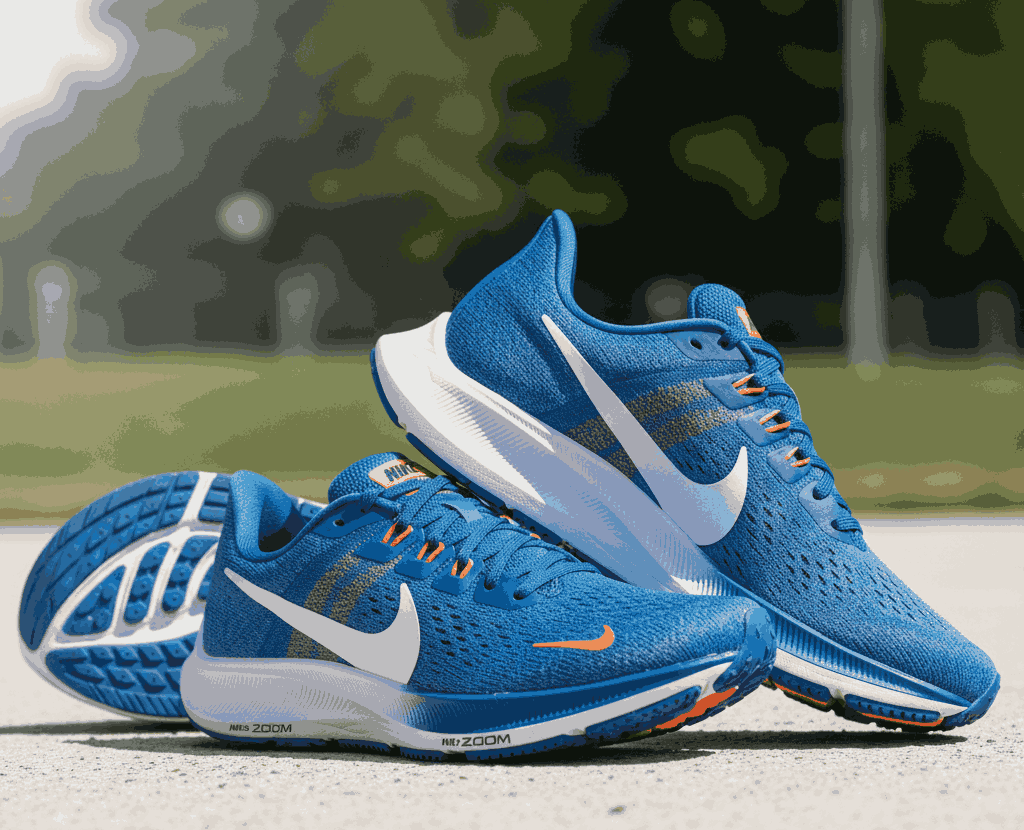
Specifications
Step inside Nike’s lineup and you’ll see a shoe for nearly every chapter of an active life. Basketball fans swear by Air Jordans and LeBrons, built with explosive cushioning and lockdown stability that mirror the athleticism of their namesakes. Runners, meanwhile, have trusted the Pegasus for decades, while marathoners reach for the Vaporfly and Alphafly, powered by ZoomX foam that feels like running on springs. Gym-goers find their match in the Metcon, designed for lifting, cardio, and functional training, while lifestyle icons like the Air Max and Air Force 1 bridge the gap between sports and streetwear. Lightweight Flyknit uppers and responsive React foam add comfort, while Zoom Air units keep energy return at its peak. With U.S. prices starting around $70 for walking shoes and climbing past $350 for rare collaborations, Nike balances accessibility with exclusivity, making its shoes both everyday essentials and prized collectibles.
Pros
- Cutting-edge performance technologies across sports categories.
- Wide selection for athletes, casual wearers, and collectors.
- Strong cultural influence with iconic collaborations and endorsements.
Cons
- Premium and limited editions can be expensive.
- Ongoing issues with quality control and customer service.
2. Adidas – Innovation, Style, and Sport Performance
Adidas has always been more than just a sports brand—it’s a lifestyle that fuses performance with fashion. In the U.S., it stands tall as the runner-up to Nike, yet it shines with its own distinct identity. From high-energy soccer fields to bustling city streets, Adidas sneakers carry a reputation for both innovation and cultural coolness. Teens especially flock to the brand, drawn by its blend of athletic credibility and streetwear appeal. Shoes like Ultraboost have redefined running comfort, while classic models such as the Superstar and Stan Smith remain icons of everyday style. At the same time, partnerships with global stars like Lionel Messi, Beyoncé, and Pharrell Williams reinforce Adidas’s place at the intersection of sport, music, and fashion. While adored for its modern looks and cushioning comfort, the brand has faced critiques over inconsistent sizing and post-purchase service. Still, Adidas keeps moving forward with confidence and style.
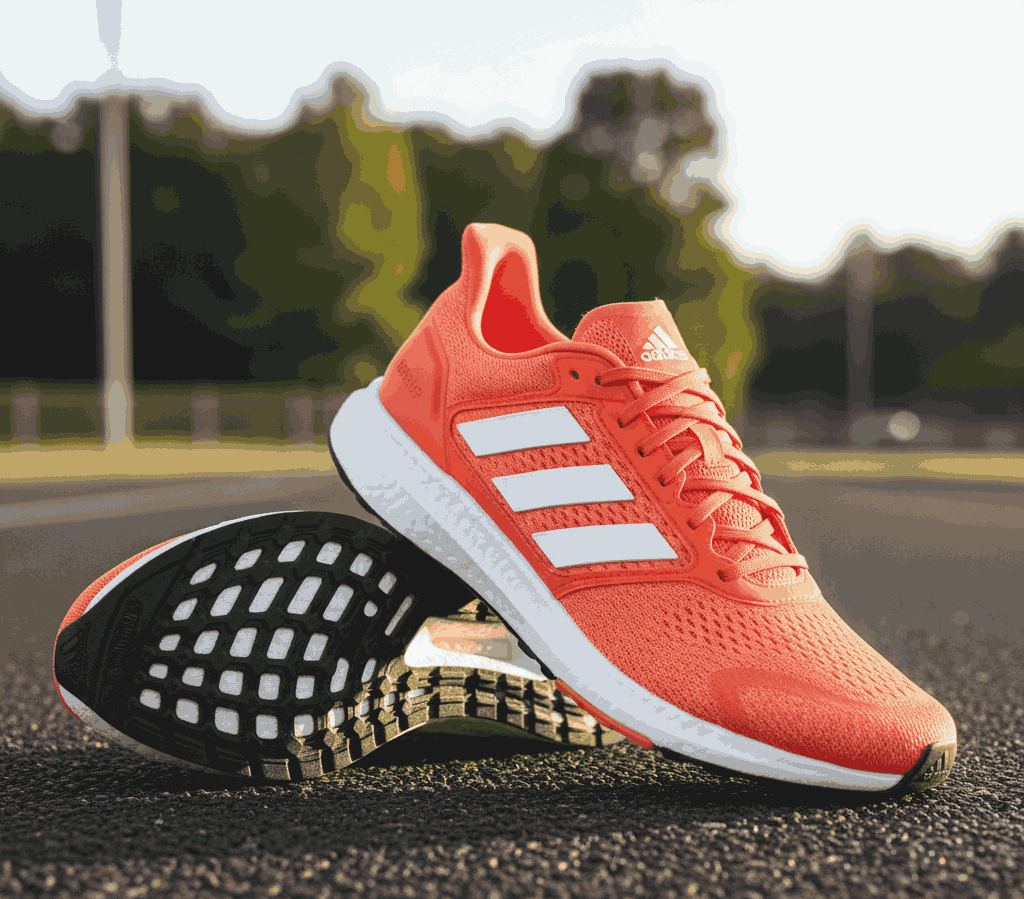
Specifications
Adidas footwear is designed to serve both athletes and trendsetters with equal measure. For runners, the Ultraboost and Evo SL highlight the brand’s famous Boost technology, delivering unmatched energy return and comfort in every stride. Soccer players dominate the pitch in Adidas cleats like the Nemeziz and X series, often inspired by icons such as Lionel Messi. Basketball players turn to lightweight, stable shoes crafted with SpeedFrame outsoles for quick cuts and agility. Beyond sports, casual wearers gravitate toward lifestyle sneakers such as the Stan Smith, Superstar, and Yeezy-inspired silhouettes, which seamlessly blend into everyday wardrobes. Adding to performance is Primeknit technology, a sock-like upper that offers breathability and a flexible fit. With U.S. prices ranging from $80 for lifestyle staples to over $250 for advanced soccer cleats, Adidas caters to everyone from aspiring athletes to fashion-savvy youth. The brand also leans heavily into sustainability, aiming for climate-neutral operations soon.
Pros
- Innovative Boost technology with superior comfort and energy return.
- Stylish designs with Primeknit uppers and iconic collaborations.
- Strong athlete endorsements across soccer, basketball, and running.
Cons
- Inconsistent sizing and fit across shoe models.
- Durability and customer service concerns reported by buyers.
3. Puma – Sport Innovation Meets Celebrity Style
Puma has steadily carved its place in the U.S. sports shoe scene, balancing performance, style, and cultural relevance. Walking into any sneaker store, you can spot Puma’s signature silhouettes—whether on the basketball court, the soccer field, or city streets. Known for merging athletic innovation with fashion, Puma attracts both serious athletes and style-conscious youth. Its NITRO and ProFoam technologies give runners and gym-goers the energy and cushioning they need, while celebrity partnerships with BTS, Jay-Z, and Dua Lipa push the brand into pop culture conversations. Though awareness is high among Americans, Puma continues to grow its loyal fan base, blending streetwear appeal with high-performance functionality. From casual weekend trainers to elite basketball shoes, Puma offers versatility that keeps it competitive. While some customers note occasional service or quality issues, the brand’s combination of innovation, style, and aspirational collaborations continues to fuel excitement in the U.S. sneaker market.
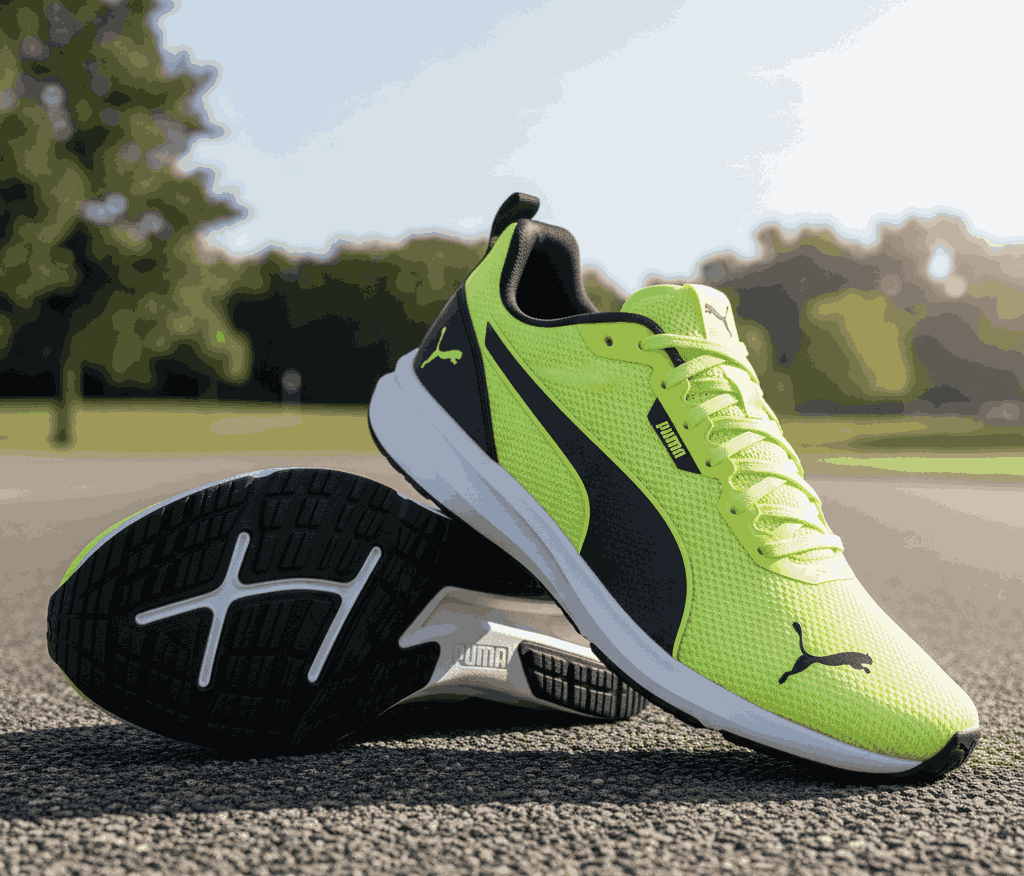
Specifications
Puma’s footwear line is built around advanced technologies designed for both sport and lifestyle. NITRO Foam provides lightweight cushioning and responsiveness, ideal for casual and competitive runners seeking energy return and shock absorption. For gym and training, ProFoam enhances bounce and comfort during high-impact workouts. Puma also integrates Fuzionfit+ adaptive uppers and OptiFit secure lockdown systems to ensure stability and a customized fit. Soccer players benefit from cleats like the ULTRA, FUTURE, and KING models, designed with professional athlete feedback for precision and traction. Basketball fans enjoy specialized shoes built for explosive moves and court agility. Puma’s lifestyle range, including retro and streetwear silhouettes, offers cultural relevance and style versatility, often through limited collaborations with music and fashion icons. In the U.S., entry-level trainers start around $60, running and training shoes range $80–$120, and high-end basketball or collaboration models can exceed $120. Sustainability efforts also feature recycled materials in several lines.
Pros
- Advanced NITRO Foam technology delivers comfort and energy return.
- Strong celebrity and athlete collaborations boost style and cultural appeal.
- Broad product range for running, training, basketball, soccer, and lifestyle.
Cons
- Occasional customer service and return process complaints.
- Some products show durability or quality inconsistencies.
4. Under Armour – Athlete-Driven Basketball and Training Innovation
In the U.S., Under Armour has become synonymous with performance-driven athletic footwear, particularly in basketball and training. Its identity is closely tied to superstar endorsements, most notably NBA icon Stephen Curry, whose signature shoes shape both the brand’s design and reputation. From the gym to the court, Under Armour shoes are engineered to deliver responsive support, cushioning, and traction for high-intensity movements. While not as dominant in streetwear or fashion lifestyle as Nike or Adidas, the brand’s focus on functionality and athlete-driven innovation has earned it a loyal following among sports enthusiasts. Recent collaborations with luxury and high-end sports designers show its ambition to bridge performance and style. Though some customers experience sizing or service frustrations, the brand’s core identity remains rooted in performance and technology. Under Armour continues to evolve, leveraging star partnerships, innovation, and sustainability initiatives to strengthen its foothold in the U.S. sports shoe market.
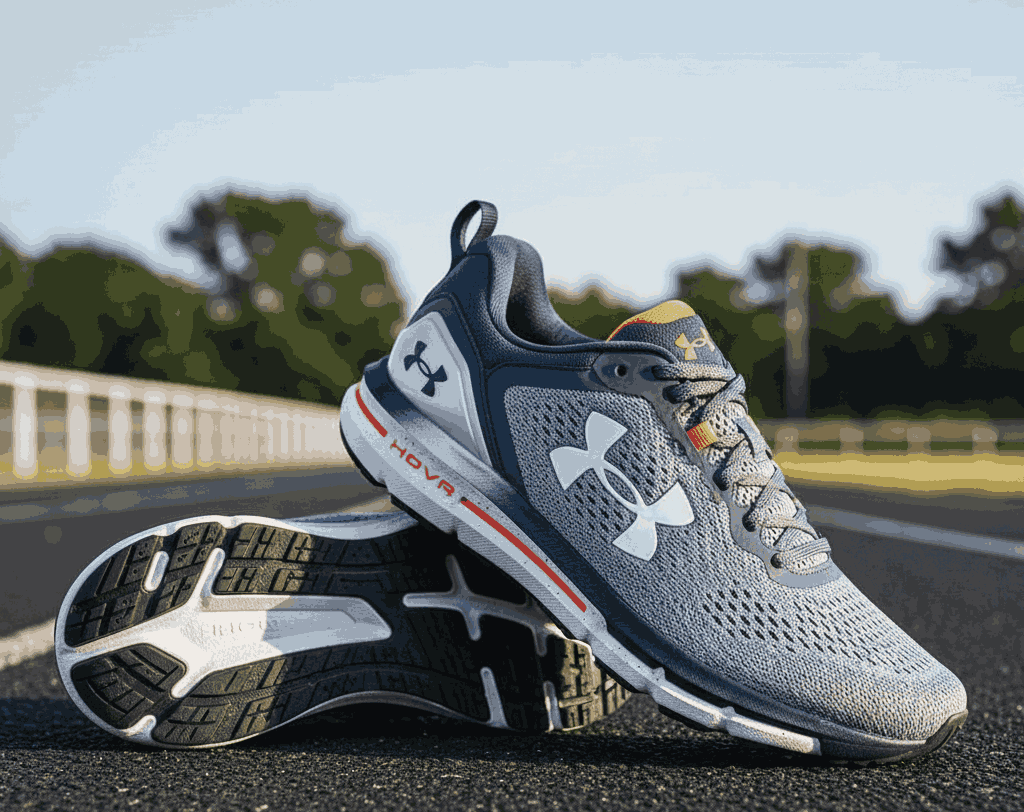
Specifications
Under Armour incorporates advanced technologies to support athletic performance. HOVR foam provides full-length cushioning, absorbing impact while returning energy for a “zero gravity” feel during running and training. Flow outsole technology offers lightweight, rubber-free traction, ideal for basketball players seeking quick responsiveness and court grip. Micro G midsoles balance cushioning and responsive energy, enhancing agility and performance for training and sports. The brand primarily serves basketball athletes, runners, and gym enthusiasts, with models ranging in the U.S. from $110–$140 for running shoes and $120–$180+ for basketball, including premium Stephen Curry signature editions. Training shoes fall in similar mid-tier ranges, offering stability and support for high-intensity workouts. While Under Armour’s lifestyle presence is limited, collaborations with luxury brands and celebrity ambassadors expand its appeal. Sustainability initiatives focus on material innovation, waste reduction, and operational improvements, reflecting a commitment to integrating environmental responsibility alongside sports performance.
Pros
- Strong athlete-driven brand anchored by Stephen Curry partnership.
- Advanced cushioning technologies like HOVR, Flow, and Micro G for performance.
- Diverse portfolio spanning basketball, running, and training footwear.
Cons
- Customer service, refund, and sizing issues reported.
- Limited streetwear and fashion lifestyle appeal compared to competitors.
5. New Balance – Heritage, Performance, and Street Style
New Balance has seamlessly evolved from its classic “dad shoe” image into a brand that bridges sports performance and streetwear fashion in the U.S. Once celebrated purely for durability and craftsmanship, it now captures the attention of athletes and style enthusiasts alike. The brand’s “Made in USA” collection symbolizes American heritage, blending timeless design with modern technology for runners, trainers, and casual wearers. Iconic collaborations with celebrities and athletes, from Rosalía to WNBA partnerships, have elevated New Balance into fashion conversations without compromising its athletic credibility. Its chunky sneakers now command attention on city streets, while core performance models like the 1080 v14 and SuperCompElite remain trusted by serious runners. While customer service and sizing consistency are sometimes reported as issues, the overall experience highlights comfort, innovation, and style. New Balance continues to build a loyal following by honoring tradition while embracing contemporary trends, sustainability, and technological advancement.
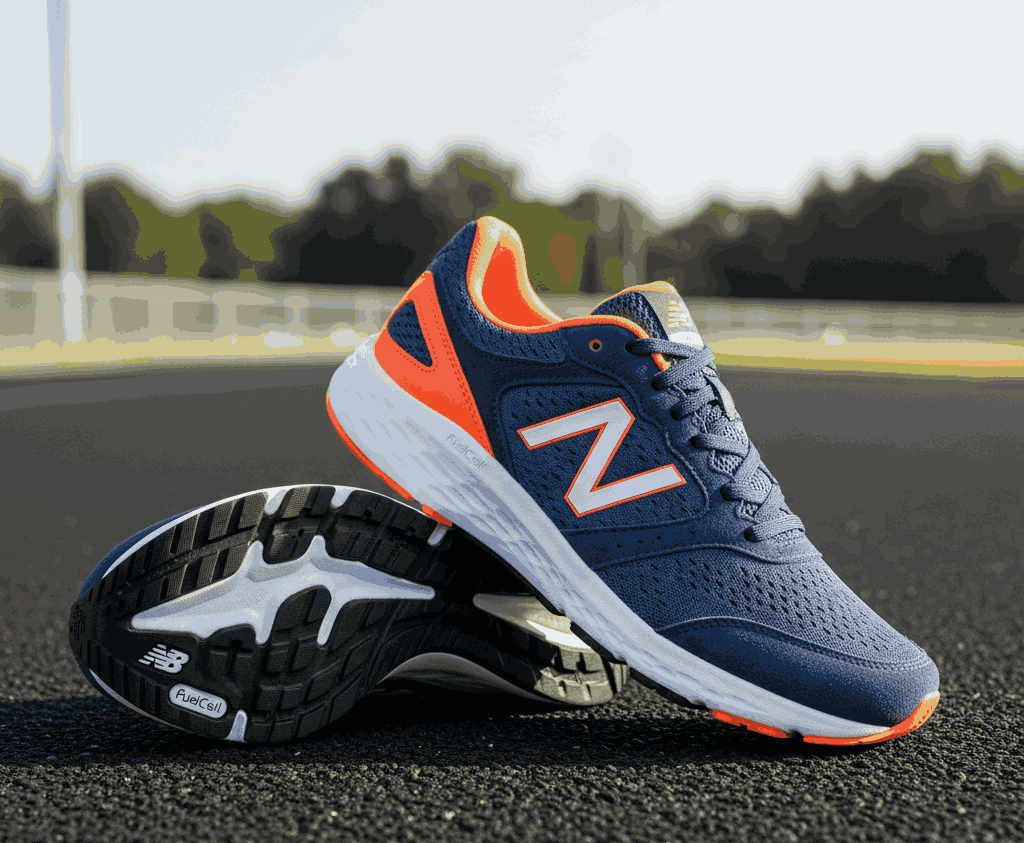
Specifications
New Balance integrates performance and comfort through innovative technologies tailored for athletes and lifestyle consumers. Fresh Foam and Fresh Foam X provide EVA-based cushioning optimized for softness, durability, and support in models such as the 1080 v14, making every stride comfortable and stable. FuelCell technology, introduced in 2019, delivers responsive propulsion, offering a springy, energetic ride in shoes like the SuperCompElite and Rebel. The brand caters to beginners, marathoners, gym-goers, and fashion-conscious individuals, blending functional performance with trendy aesthetics. Prices in the U.S. range from $90–$180 for standard running and training shoes, while lifestyle models and limited collaborations can reach $110–$275 or more. Sustainability is central to New Balance’s approach, with goals to use 100% preferred polyester by 2030, reduce waste, and incorporate recycled materials into designs. The combination of technology, heritage craftsmanship, and eco-conscious efforts ensures New Balance remains a versatile and respected brand in America.
Pros
- Strong heritage with “Made in USA” craftsmanship.
- Fresh Foam and FuelCell technologies provide cushioned, responsive rides.
- Balanced appeal to athletes and fashion-conscious consumers.
Cons
- Customer service and order handling complaints reported.
- Sizing inconsistencies and premium pricing for limited editions.
6. Hoka – Maximal Comfort for Runners and Lifestyle
In the U.S., Hoka has quickly earned a reputation for redefining comfort in running shoes. Since its founding in 2009, the brand has grown into a billion-dollar name, celebrated for its thick, plush midsoles and innovative designs that prioritize support and cushioning. Runners, walkers, and recovery-focused athletes alike swear by Hoka shoes, praising their ability to reduce fatigue and protect joints on long distances. Beyond the track, Hoka’s bold, chunky silhouettes have carved out a place in streetwear culture, embraced by fashion enthusiasts and celebrities for their distinctive “ugly shoe” appeal. Its combination of science-backed performance and standout aesthetics allows Hoka to resonate across age groups and activity levels. While some customers note occasional sizing challenges or service delays, most find the shoes’ comfort and support worth the investment, making Hoka a brand that blends performance, lifestyle, and culture in a way few others can match.
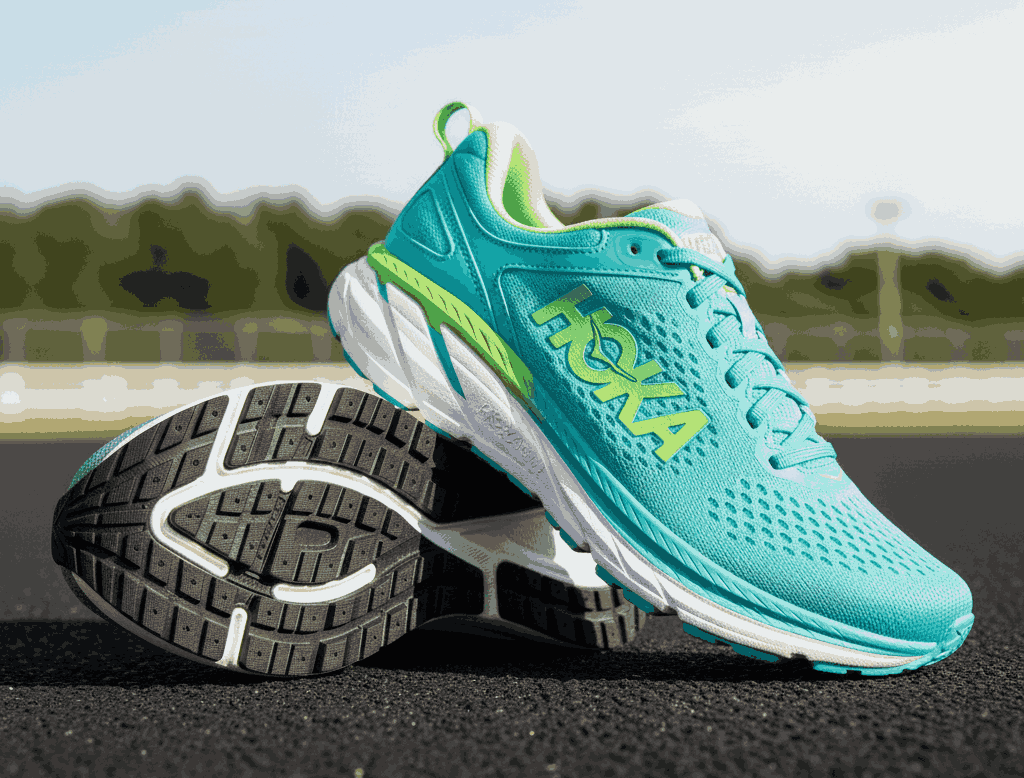
Specifications
Hoka shoes are engineered for maximum comfort and performance. The Max-Cushion Midsoles provide plush shock absorption while remaining lightweight, making long runs and recovery sessions feel effortless. The Meta-Rocker design enhances natural gait cycles, promoting smooth heel-to-toe transitions and energy efficiency. For added stability, the Active Foot Frame cradles the foot without rigid supports, balancing cushioning with control. Popular lines include Clifton, Bondi, Mach, and Speedgoat, each tailored to different running styles and terrain, including trail and road use. Prices in the U.S. range from $125–$185 depending on the model and technology, with higher-end trail or maximal cushioning shoes at the top of the spectrum. Hoka also appeals to lifestyle users with bold silhouettes and vibrant colorways, establishing a growing presence in sneaker culture. Sustainability is a priority, with eco-friendly materials and zero-waste goals integrated into the brand’s operations.
Pros
- Exceptional maximal cushioning and shock absorption.
- Meta-Rocker design enhances gait efficiency and running form.
- Strong appeal among runners, walkers, and lifestyle users.
Cons
- Sizing can be inconsistent, leading to fit issues.
- Customer service experiences reported as uneven by some users.
7. ASICS – Trusted Running Performance and Cushioning
For runners across the U.S., ASICS has become a trusted companion on every mile. Known for its dedication to comfort, durability, and performance, the brand has earned a loyal following among marathoners, casual joggers, and gym enthusiasts alike. Slipping into a pair of Gel-Nimbus or Gel-Kayano shoes feels like more than just wearing sneakers—it’s experiencing decades of innovation designed to protect joints, enhance energy return, and keep every step smooth. While ASICS may not dominate streetwear culture like Nike or Adidas, it resonates deeply with those who value functionality and reliability over hype. Its reputation in the running community is built on consistent quality, shock absorption, and lightweight performance. Though some users report occasional service issues or limited availability, ASICS continues to inspire confidence in athletes nationwide, offering footwear that blends science-driven technology with the simple joy of running.
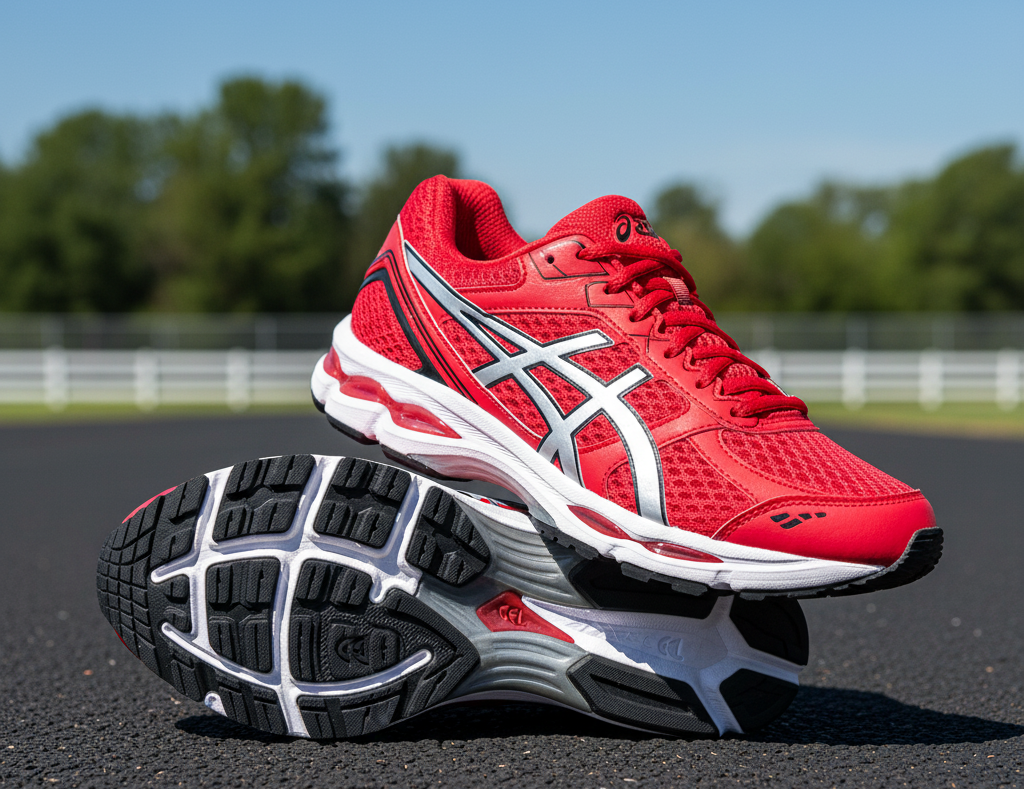
Specifications
ASICS shoes are engineered with technologies designed to support serious runners and active lifestyles. Gel Cushioning in the heel and forefoot provides shock absorption that prevents injury and keeps long-distance runners comfortable mile after mile. FlyteFoam midsoles offer lightweight, responsive cushioning that doesn’t compress over time, enhancing energy return with every step. For added stability, Dynamic DuoMax technology reduces overpronation, while Guidance Line outsoles guide efficient gait mechanics. The brand’s product range spans from high-performance running models like Gel-Nimbus and Gel-Kayano ($130–$180) to entry and mid-level trainers ($90–$130), with casual and sports-style sneakers available at $80–$140. ASICS focuses on sleek, functional designs rather than fashion hype, appealing to consumers who prioritize performance and durability. Sustainability is also a key focus, with eco-friendly models like NIMBUS MIRAI and significant reductions in carbon emissions and waste projected by 2030.
Pros
- Industry-leading Gel cushioning for comfort and injury prevention.
- Lightweight and responsive FlyteFoam midsoles for enhanced performance.
- Strong reputation among runners and serious athletes.
Cons
- Mixed customer service experiences reported.
- Limited streetwear or fashion appeal compared to competitors.
8. Brooks – Running Specialist Focused on Comfort
For runners in the U.S., Brooks has become synonymous with performance, reliability, and trust. As the leading adult performance running shoe brand, Brooks has carved a niche among serious runners and fitness enthusiasts who value comfort, injury prevention, and consistent quality over flashy designs. Each pair tells a story of careful engineering, from morning jogs to marathon finishes, blending technology with a runner-first philosophy. The brand’s deep connection to the running community—through sponsored events, elite athletes, and grassroots engagement—reinforces its authenticity. While Brooks may not dominate streetwear or fashion conversations like Nike or Adidas, it commands loyalty among Americans who prioritize functional footwear that supports long-term performance. Positive customer feedback highlights cushioning, stability, and fit, even if some report occasional service issues. Brooks’ focus on sustainability, such as the ReStart resale program, further strengthens its position as a brand committed not just to runners, but also to responsible innovation and community impact.
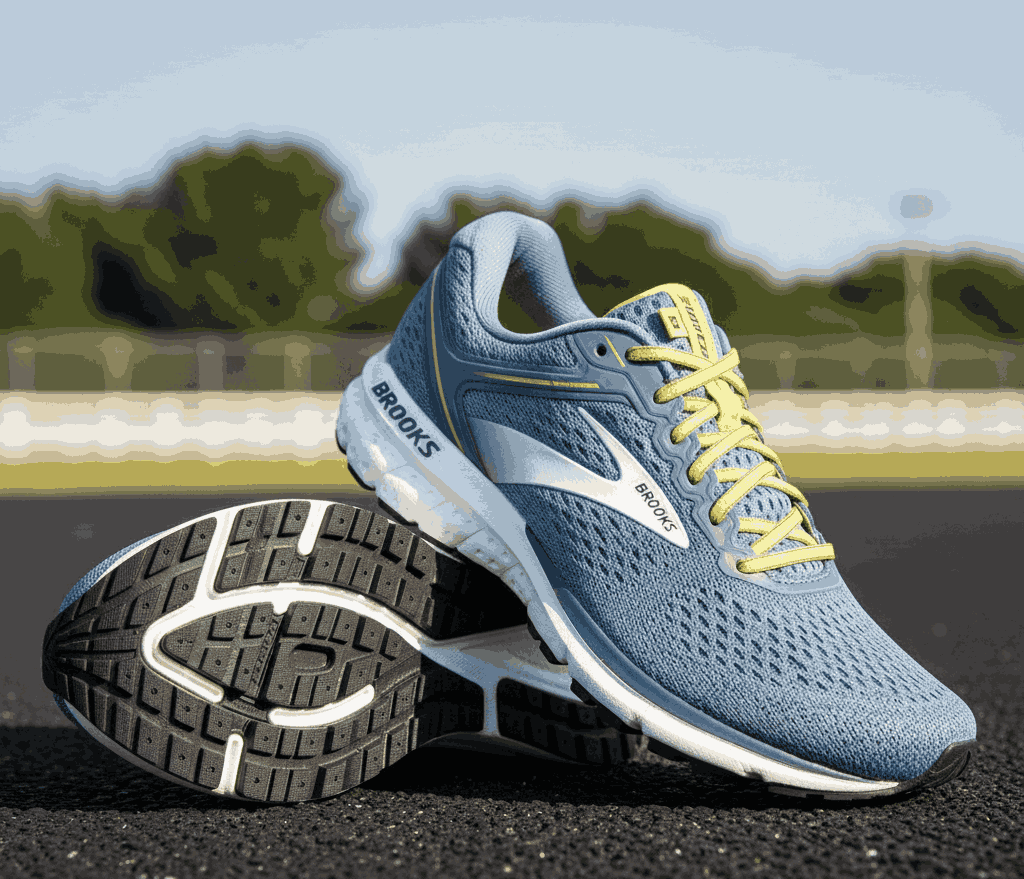
Specifications
Brooks shoes are designed to provide optimal performance and support for runners and active individuals. DNA Loft cushioning adapts to foot strike, offering a plush, durable ride that absorbs impact during long runs. The GuideRails system works holistically, limiting excess knee and foot motion to maintain natural strides and reduce injury risk. Additional technologies like BioMoGo DNA foam and the Holistic Motion System provide adaptive cushioning and encourage natural movement, ensuring comfort and efficiency. Brooks caters to marathoners, daily trainers, fitness enthusiasts, and walkers, delivering consistent performance across all distances. In the U.S., most models range from $100–$170, with premium racing shoes like the Hyperion Elite priced around $250. While Brooks emphasizes function over fashion, its growing marketing campaigns target younger audiences with lifestyle-focused narratives emphasizing comfort, personal health, and sustainability initiatives, including the ReStart recommerce program and responsible sourcing practices.
Pros
- Market leader in performance running with 22% U.S. market share.
- Advanced cushioning and support technologies (DNA Loft, BioMoGo DNA, GuideRails).
- Strong commitment to sustainability and community engagement.
Cons
- Style is less fashion-forward compared to competitors like Nike or Adidas.
- Some complaints about online shopping and customer service responsiveness.
9. Skechers – Everyday Comfort for All Ages
In the U.S., Skechers has become synonymous with comfort, practicality, and everyday wearability. Loved by all age groups—from children to seniors—the brand has carved a niche for consumers seeking shoes that prioritize cushioning and support over high-performance sport. Walking down city streets or suburban sidewalks, you’ll spot Skechers’ signature designs offering soft memory foam comfort and easy slip-on convenience. While not focused on elite athletic performance, Skechers has mastered the art of affordable, reliable footwear, making it a staple in casual and light training categories. Celebrity collaborations, from Martha Stewart to Snoop Dogg, add a touch of lifestyle flair, keeping the brand culturally relevant. Though some customers report durability issues or inconsistent service, most find the comfort, broad sizing, and practical design worth the investment. Skechers remains a go-to for Americans who value daily comfort and versatile shoes without breaking the bank.
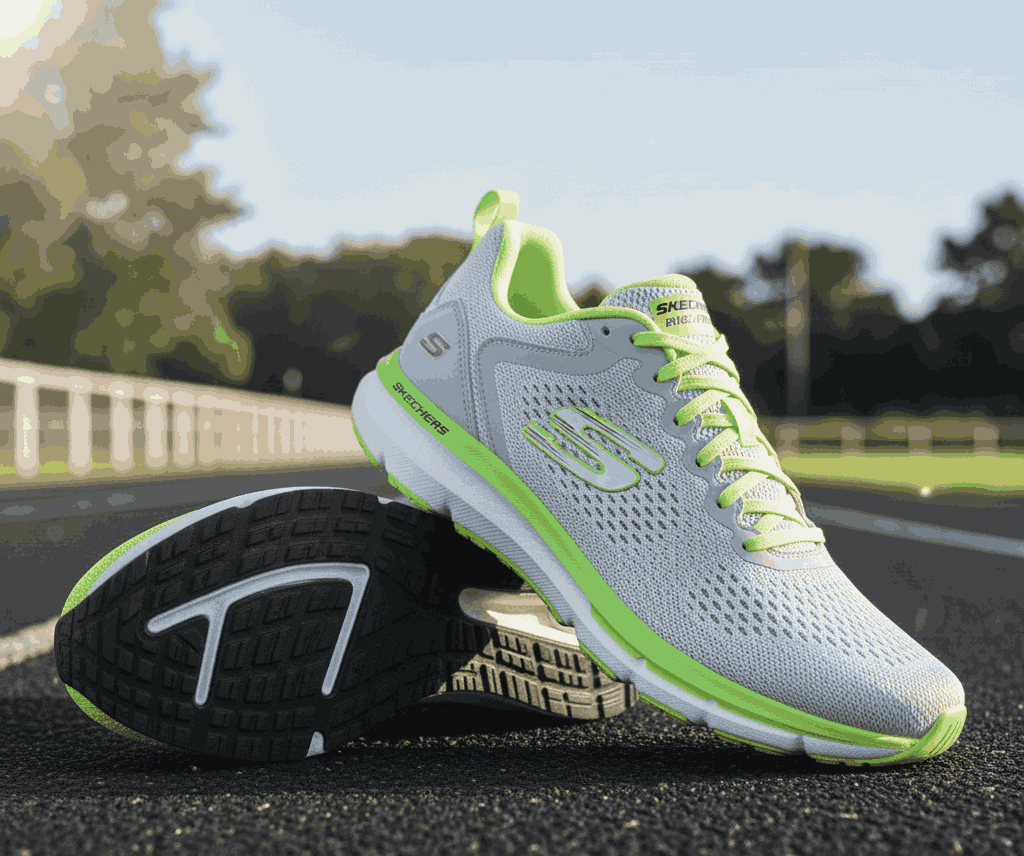
Specifications
Skechers shoes are engineered for all-day comfort and everyday use. Memory Foam insoles provide plush cushioning that adapts to the foot’s shape, ideal for walking and casual activities. Arch Fit technology offers podiatrist-certified removable insoles with enhanced support for flat feet and overpronation. Additional comfort features include Air Cooled Memory Foam, Goga Mat midsoles for energy return, and Max Cushioning for walking shoes. The brand caters to a wide audience, from casual wearers and children to light trainers seeking dependable shoes. U.S. prices range from $60–$120 for walking and casual shoes, $80–$120 for light training models, and $80–$150 for lifestyle and collaborative collections. Skechers emphasizes everyday practicality while engaging consumers through celebrity partnerships and broad advertising. Sustainability initiatives, like the “Our Planet Matters” recycled footwear line and partnerships with The Nature Conservancy, highlight the brand’s commitment to eco-friendly practices.
Pros
- Widely recognized for comfort with Memory Foam and Arch Fit technology.
- Broad appeal across all age groups for walking and casual wear.
- Affordable price range with celebrity partnerships enhancing visibility.
Cons
- Product durability issues noted in some customer reviews.
- Customer service and returns challenges reported by buyers.
10. FootJoy – Golf Comfort, Traction, and Tradition
Step onto any golf course in the U.S., and you’ll likely see FootJoy shoes quietly leading the way. Known as the “#1 shoe in golf,” FootJoy has spent over five decades earning the trust of professional golfers, amateurs, and weekend enthusiasts alike. Its reputation isn’t just about performance—it’s about the feeling of confidence that comes with every swing, putt, and stride across the fairway. From tour-level pros like Wyndham Clark and Jessica Korda to casual players seeking comfort and style, FootJoy shoes have become a symbol of reliability and tradition in the golf world. With a blend of classic design, modern technology, and cultural prestige, the brand continues to set the standard for premium golf footwear. While some customers note occasional service or fit concerns, FootJoy’s long-standing heritage, comfort, and performance make it a top choice for anyone serious about the game.
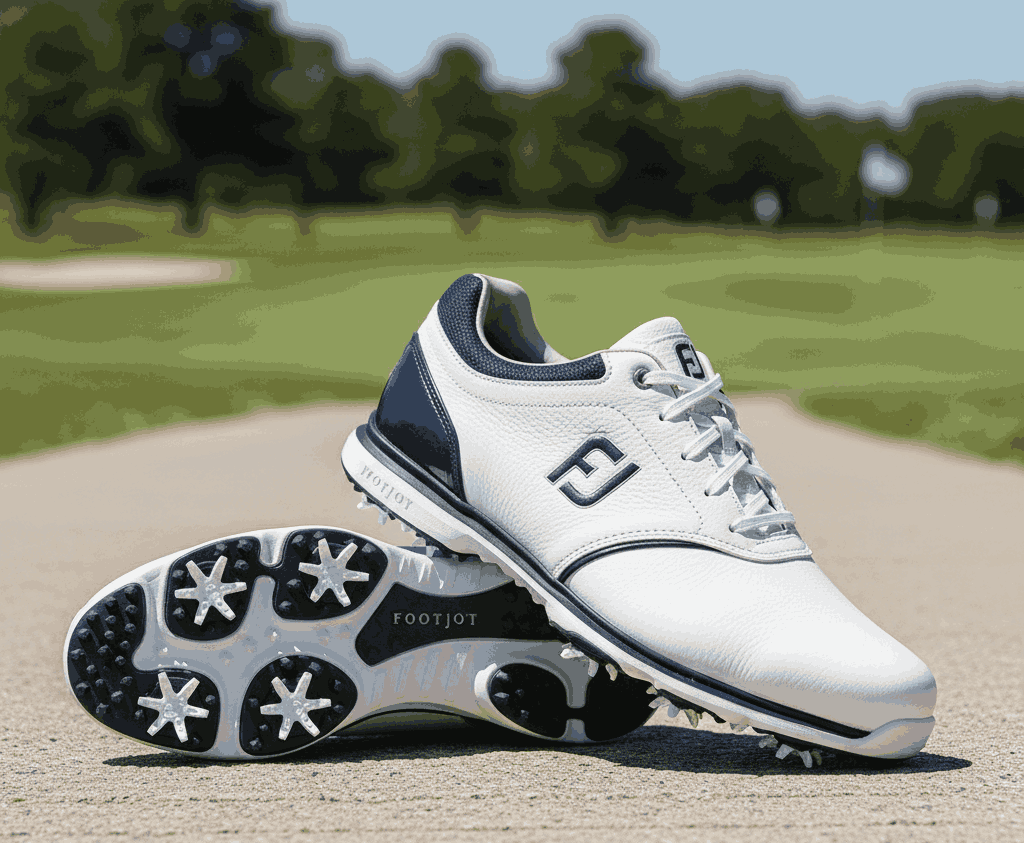
Specifications
FootJoy’s shoes are engineered for peak performance on the course, combining traction, comfort, and durability. Traction systems like VersaTrax+ and Pulsar LP cleats provide secure grip and stability across diverse course conditions, earning the approval of PGA and LPGA professionals. For wet conditions, most models feature a two-year waterproof warranty, ensuring reliable protection and dry feet. Comfort comes from OrthoLite EcoPlush FitBed cushioning and the TruFIT system, offering all-day support and secure heel lock. Flexibility and energy transfer are enhanced by PowerPlate and OptiFlex outsoles, helping golfers maintain consistent swings while reducing walking fatigue. FootJoy caters to serious golfers with both spiked and spikeless options, blending classic aesthetics with modern technology. In the U.S., entry-level models start around $80, premium shoes range $130–$230, and past-season or sale models can be found for $60+. Sustainability efforts are increasingly incorporated into materials and manufacturing processes.
Pros
- Trusted market leader with PGA and LPGA endorsements.
- Advanced traction, waterproofing, and comfort technologies.
- Classic and stylish golf lifestyle appeal.
Cons
- Premium models can be expensive for casual golfers.
- Occasional customer service and warranty handling issues.
Market Comparison of Top 10 Brands of Sports Shoes in USA
| Brand | Key Features | Price Range | Specialty / Focus |
|---|---|---|---|
| Nike | Air and Zoom cushioning, Flyknit uppers, versatile performance technologies | $70–$350+ Buy Now | Performance & cultural influence |
| Adidas | Boost foam, Primeknit uppers, lightweight, stable outsoles | $80–$250+ Buy Now | Innovation, style, and sports performance |
| Puma | NITRO & ProFoam cushioning, Fuzionfit+ uppers, OptiFit lockdown | $60–$120+ Buy Now | Sport innovation combined with celebrity style |
| Under Armour | HOVR cushioning, Flow outsole, Micro G midsoles | $110–$180+ Buy Now | Athlete-driven basketball & training innovation |
| New Balance | Fresh Foam/FuelCell technology, EVA-based cushioning | $90–$275+ Buy Now | Heritage, performance, and street style |
| Hoka | Max-Cushion midsoles, Meta-Rocker, Active Foot Frame | $125–$185+ Buy Now | Maximal comfort for running & lifestyle |
| ASICS | Gel cushioning, FlyteFoam midsoles, Dynamic DuoMax, Guidance Line outsoles | $80–$180 Buy Now | Running performance & cushioning |
| Brooks | DNA Loft & BioMoGo DNA cushioning, GuideRails, Holistic Motion System | $100–$250 Buy Now | Running specialist with comfort & support |
| Skechers | Memory Foam insoles, Arch Fit, Goga Mat midsoles | $60–$150 Buy Now | Everyday comfort for all ages |
| FootJoy | VersaTrax+/Pulsar cleats, OrthoLite FitBed, TruFIT system, waterproof | $60–$230+ Buy Now | Golf-specific comfort, traction, tradition |
Where to Purchase
Leading e-commerce platforms dominate the running shoe market, offering broad availability, competitive pricing, and extensive customer reviews:
- Amazon: Wide selection across all tiers, frequent discounts, and detailed buyer feedback.
- Walmart: For daily runners, there are affordable entry-level and mid-range models available.
- Dick’s Sporting Goods: Premium inventory, exclusive editions, and professional fitting guides.